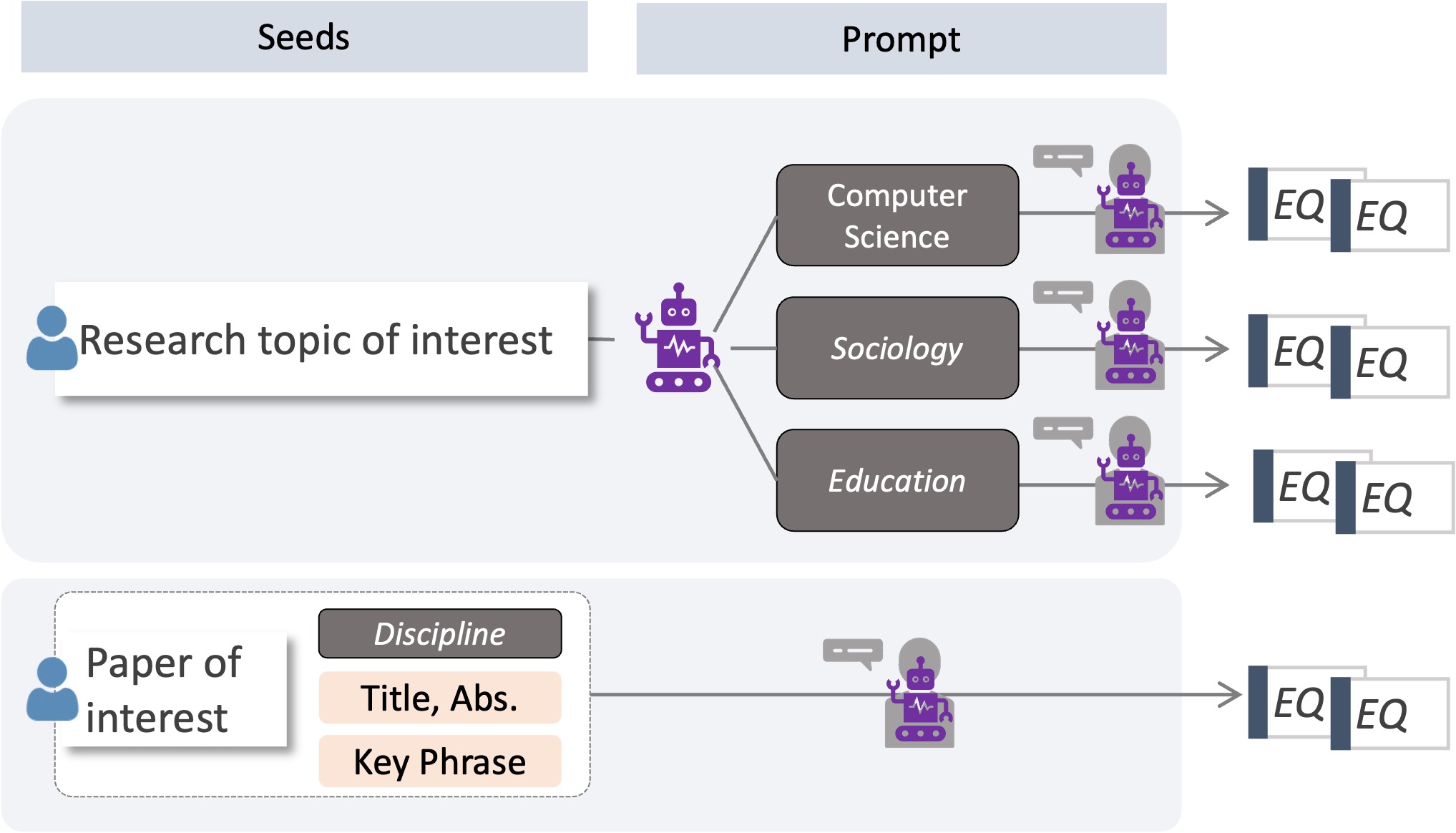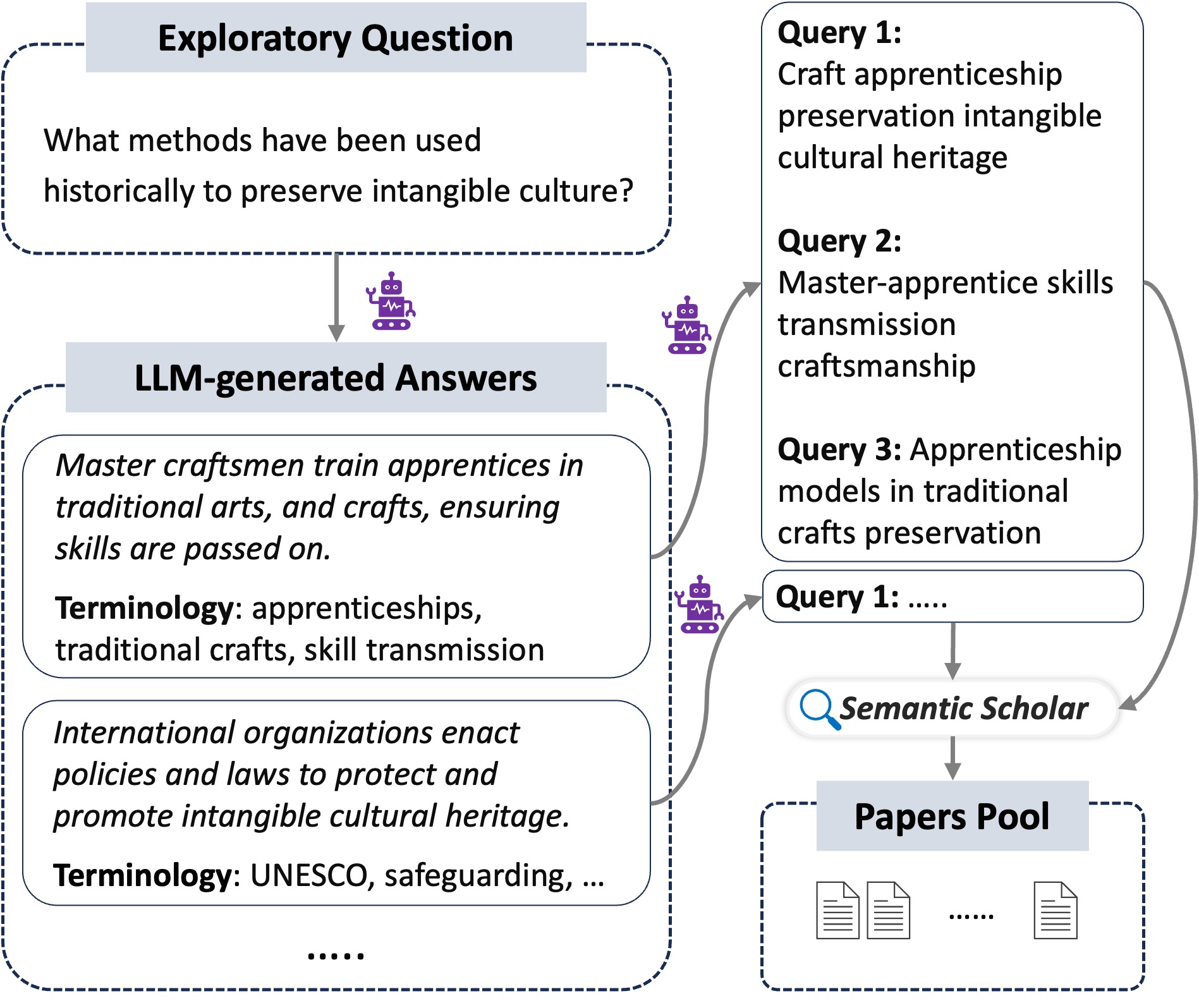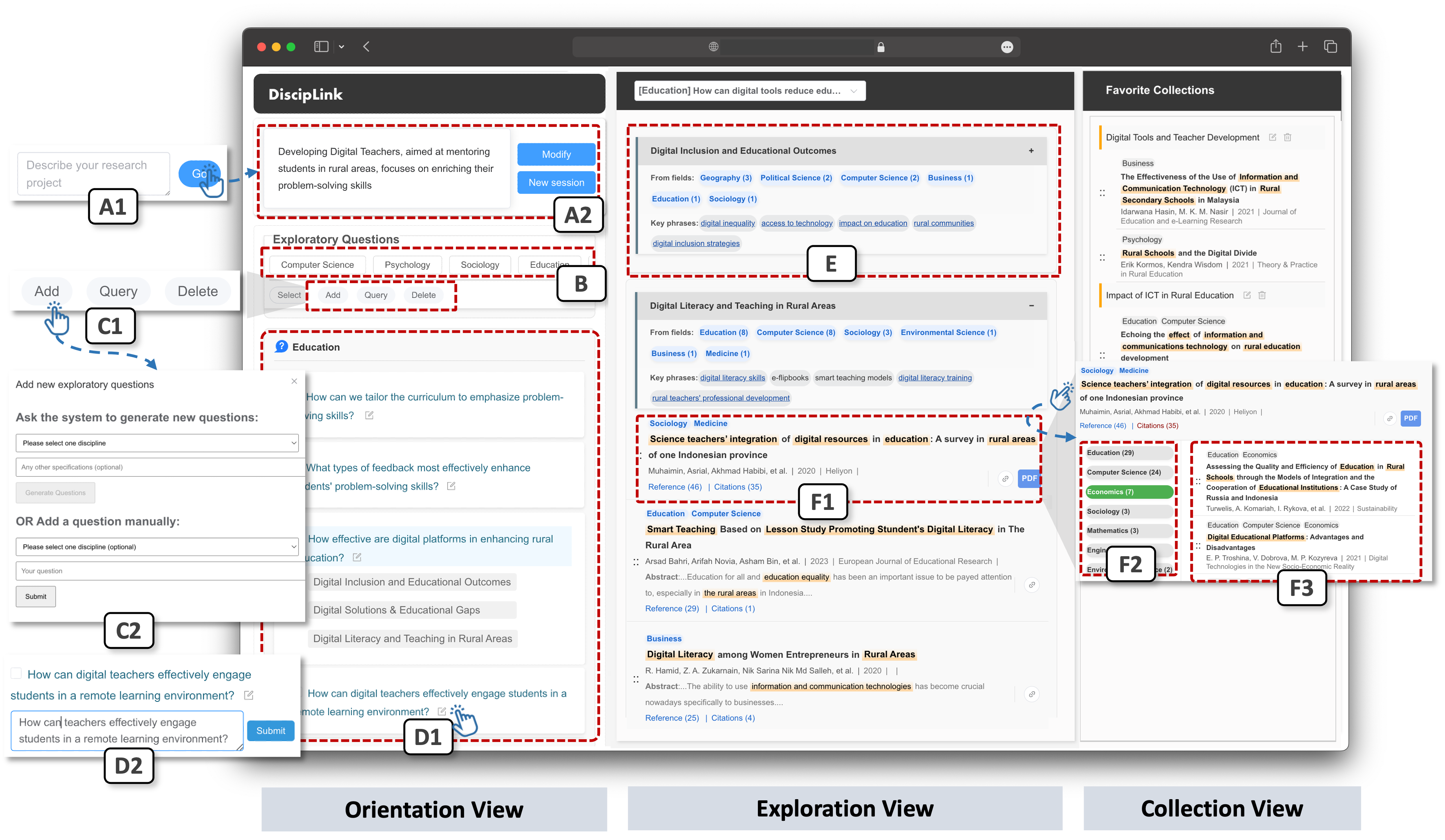Interdisciplinary research is essential for solving complex, real-world problems, but researchers face major challenges. Relevant knowledge is scattered across various disciplines, terminologies differ, and the process of synthesizing information is often non-linear and time-consuming. Traditional tools provide limited guidance when researchers need to navigate unfamiliar domains and integrate insights from multiple fields.
We design DiscipLink that offers a solution by combining Human-AI collaboration with a nonlinear model of interdisciplinary information seeking. Using Large Language Models (LLMs), DiscipLink generates exploratory questions (EQs) from multiple disciplines, expands queries with field-specific terminology, and organizes retrieved papers into thematic clusters. This approach enhances both the breadth and depth of exploration, helping researchers quickly find, synthesize, and apply relevant knowledge from diverse fields.
Key Features
1. Exploratory Questions (EQs)
DiscipLink generates EQs based on the user's input, guiding them to explore literature in diverse research fields. EQ works as a shared representation between users and the system, allowing users to collaborate with the system, customizing questions and refining search directions based on their specific research interests.

Generate Exploratory Questions
2. Query Expansion
The system automatically expands search queries using discipline-specific terminologies, making it easier to bridge the gap between fields and uncover relevant literature that might otherwise be missed. Specifically, we first prompt LLMs to generate a set of pseudo-answers, and then ground the query generation based on these answers.

Generate Search Queries
3. Thematic Organization of Retrieved Papers
DiscipLink organizes retrieved papers into themes based on the EQs (see Figure "The user interface of DiscipLink" (E)), allowing researchers to explore clusters of knowledge related to their interdisciplinary focus.
4. Paper Screening and Analysis
The system highlights connections between papers and exploratory questions (see Figure "The user interface of DiscipLink" (F)), aiding researchers in quickly identifying key papers and reducing information overload during the review process.

The user interface of DiscipLink
Evaluation
DiscipLink was evaluated through a comparative experiment and an open-ended exploratory study. The findings showed that it significantly enhanced researchers' ability to gather comprehensive knowledge across multiple disciplines. The system facilitated more efficient and structured interdisciplinary exploration, helping participants identify both familiar and novel research directions.
References
- Foster A. A nonlinear model of information‐seeking behavior[J]. Journal of the American society for information science and technology, 2004, 55(3): 228-237.
- Heer J. Agency plus automation: Designing artificial intelligence into interactive systems[J]. Proceedings of the National Academy of Sciences, 2019, 116(6): 1844-1850.
Learn More
Visit the full paper at the ACM Digital Library and Arxiv.